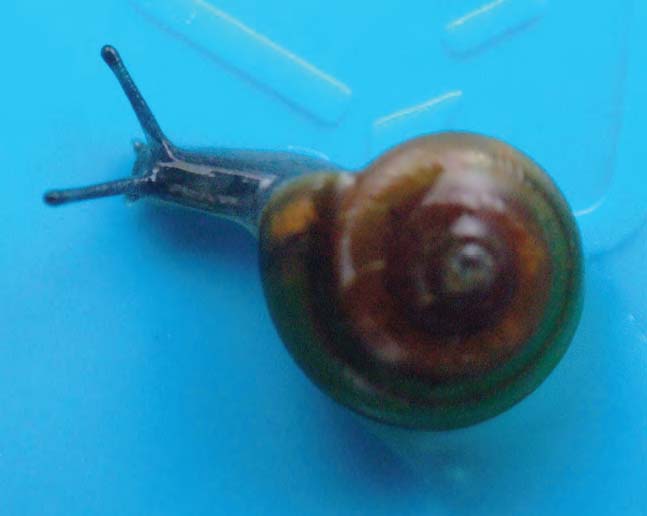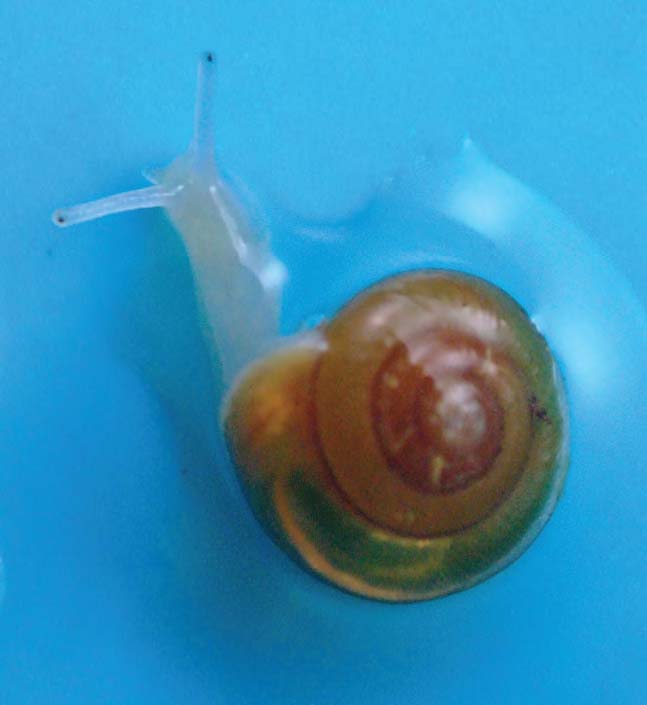Issue
18
Page
11
Species
Zonitoides nitidus has a pale brown, glossy, translucent shell, but appears almost black in life because of the very dark colour of the animal (Kerney, M.P. & Cameron, R.A.D. 1979 A field guide to the land snails of Britain and North-west Europe. Collins; Cameron, R.A.D. 2003 Land snails of the British Isles. Field Studies Council). There is also a dull orange spot on the mantle, visible through the shell. It is a species of very moist places, and in Scotland I have found it more often in the damp west than the in the drier east, where I live.
In September 2008 I joined an outing to Mugdock Wood, near Milngavie on the north-west edge of Glasgow, organised by the Glasgow Natural History Society, with the aim of looking at the molluscs of this ancient woodland. The first specimen of Z. nitidus was found on the shore of Mugdock Loch, and later in the day the last one was discovered on the bank of the Allander Water, both typical very damp habitats. In between, several turned up in Mugdock Wood itself, which after the rainy summer of 2008 was no doubt more than wet enough for this species. All the individuals found were typical dark specimens with the orange spot on the mantle (Figure 1), except for one. This exceptional specimen appeared to have no body pigment, and in fact was almost transparent, although the eyes are clearly pigmented, so it was not a true albino (Figure 2). The orange spot on the mantle is clearly present, as in the typical dark specimens.
A cursory search with GoogleTM and GoogleTM Scholar didn’t turn up any reports of pale or albino Zonitoides nitidus, nor does Ellis (Ellis, A.E. 1926 British snails. Oxford University Press, 1969 reprint) mention anything of the sort, although he lists a great number of varieties for some other species of snail. However, albino or pale snails are not uncommon, as a perusal of Google will confirm, so perhaps it is not surprising that a pale-bodied Zonitoides nitidus has turned up.
|
Figure 1. A normal, dark-bodied Zonitoides nitidus from Mugdock Wood, showing the orange spot on the mantle just inside the shell. (The green colour within the shell is simply the blue background showing through.)
|
Figure 2. The pale-bodied Zonitoides nitidus from Mugdock Wood. Note that the orange spot on the mantle is still clearly visible, and that the eyes at the ends of the tentacles are pigmented. |


